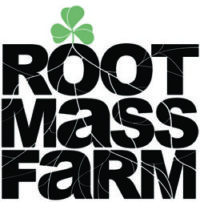I went to the PASA conference (Pennsylvannia Association of Sustainable Agriculture) this past weekend. I’ve gone to the conference for several years now, and it’s always a great source of diverse agricultural know-how. This year I learned about everything from internet marketing to hops growing – it turns out I don’t want to grow hops. But the most exciting workshop I went to was the presentation on forage radishes. I’d heard about these before, and even considered using them this past year while we were preparing our fields. After going to the PASA workshop, I wish I had planted them.
Forage radishes look a lot like daikon radishes:
Forage Radish
The long taproot can burrow deep into the soil, reducing soil compaction and improving drainage. This process is called bio-drilling and would be excellent for our fields which are wet and have a history of tractor use.
Like all good winter cover crops, forage radishes help keep nutrients in the fields from year to year. But forage radishes also winter kill so there is no crop to turn in the next spring. And because they are such a vigorous fall crop, they can prevent sunlight from reaching weed seeds that germinate early the next spring. This leaves your fields rich and bare in the spring. All in all, I’m very excited to give them a try.
Pennsylvania farmer, Steve Groff, has been touting the benefits of forage radishes for a number of years. There is actually a big picture of him holding a forage radish on the Fair Food Farmstand’s window on the 12th Street side of Reading Terminal. If you want to learn more about these radishes check out this video of Steve Groff from the Tillage Radish website.
Root Mass Farm, Fall 2011
